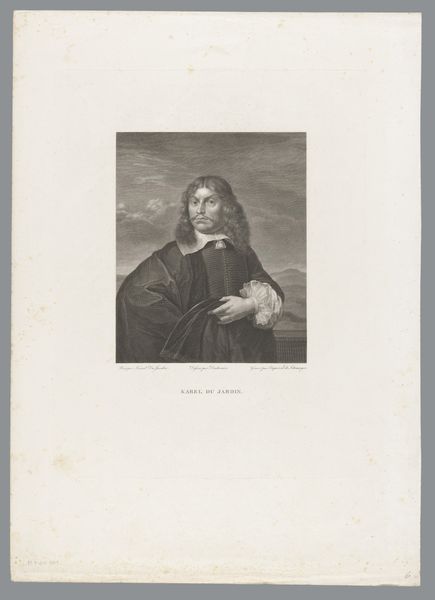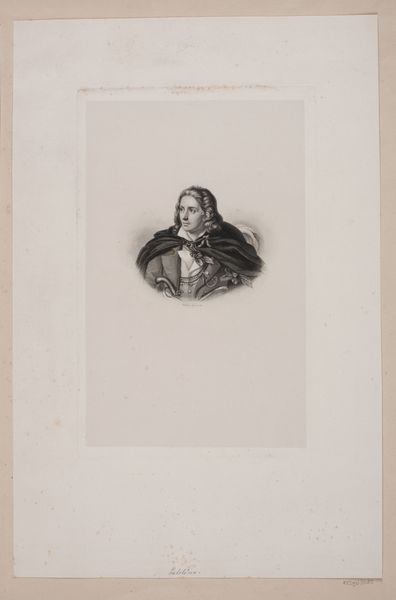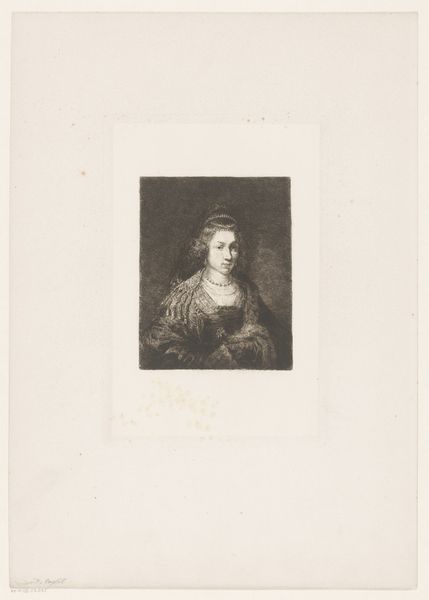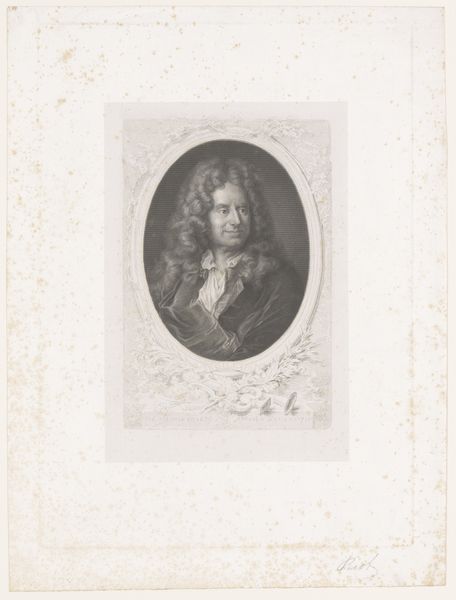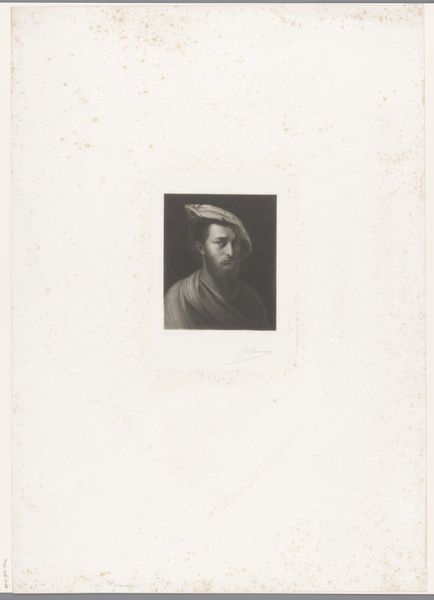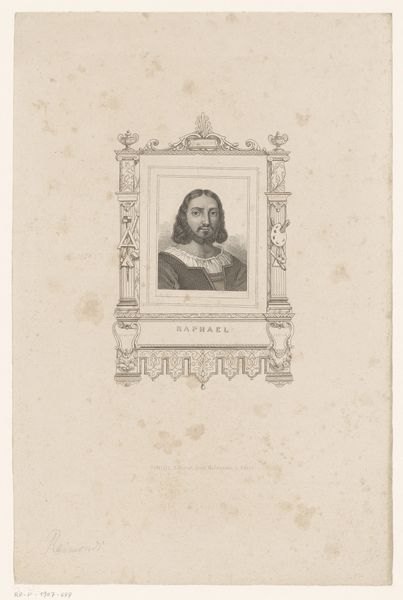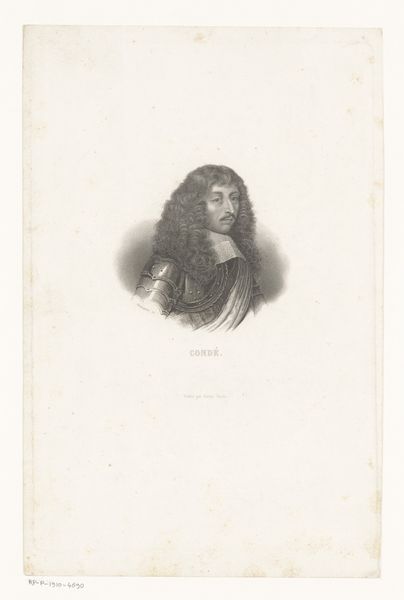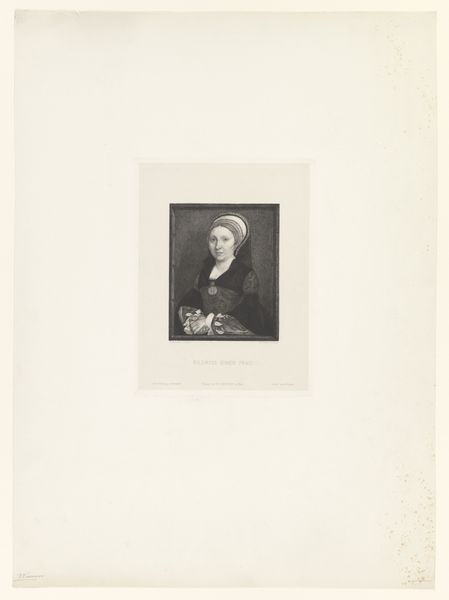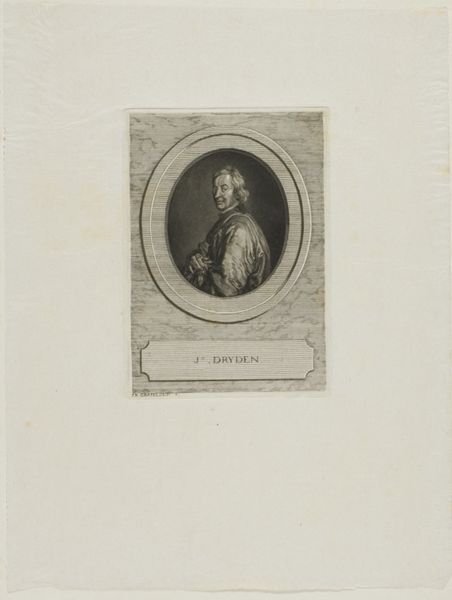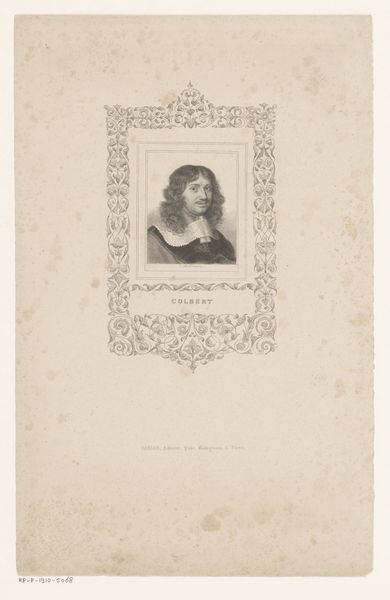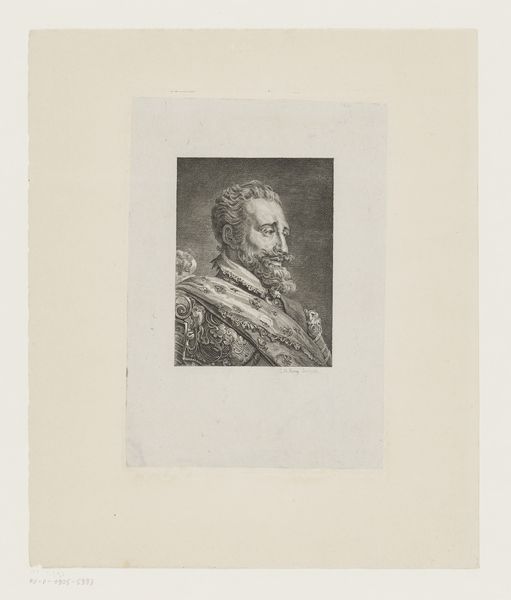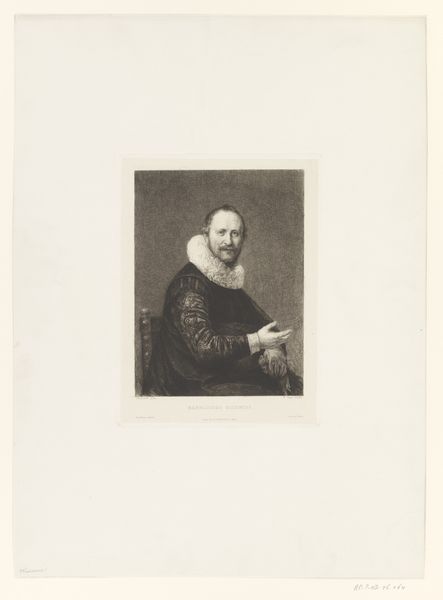
print, engraving
#
portrait
#
pencil drawn
# print
#
pencil sketch
#
academic-art
#
engraving
Dimensions: height 165 mm, width 121 mm
Copyright: Rijks Museum: Open Domain
Curator: Here we have an engraving dating somewhere between 1850 and 1899, currently held at the Rijksmuseum. The piece is a portrait of Ludovico Ariosto. Editor: He looks like he’s pondering…perhaps debating whether or not to finally finish that epic poem! There's a gentle sadness about him, a sense of depth behind the eyes. It's quite arresting for a monochrome print. Curator: The image resonates with academic-art conventions; it serves as a formal representation befitting someone of Ariosto's literary stature, almost canonizing him. His influence shaped Italian Renaissance literature profoundly. We see this perpetuated even through prints like this one decades and centuries after his own time. Editor: Exactly, he's staged. Look at the subtle detailing of his sleeves—they almost seem more important than his face at first glance, all that swirling pattern. He is clearly staged to show wealth, status. One does wonder, does that accurately reflect the real Ariosto? Or the man Renaissance audiences imagined him to be? Curator: Prints like this one played a key role in circulating images of cultural figures across Europe. They allowed a much wider audience access than painted portraits that remained in private collections or aristocratic circles. These prints helped forge and solidify his lasting cultural memory. Editor: It's also intriguing how softened and dreamlike the whole image is given the precise nature of engraving. Almost as if memory itself has blurred the edges of our perception of the man. The print itself is very lovely, with such delicate gradations from light to dark. Curator: Indeed. Though presented as a portrait of an individual, prints of figures like Ariosto fulfilled a vital societal role in the 19th century, underscoring the significance of the past to cultivate national pride, a very relevant aspect in our contemporary reflections upon images from centuries past. Editor: Makes you think about the power of portraits doesn't it? They all create and preserve some version of reality, often subtly reshaped by whoever commissioned them, the artist, and certainly by the generations who interpret them afterward. Curator: Absolutely. Thanks for pointing out how it remains a piece made with deliberate societal objectives. Editor: Thanks. Seeing art like this always inspires me to go write or sketch… something.
Comments
No comments
Be the first to comment and join the conversation on the ultimate creative platform.

